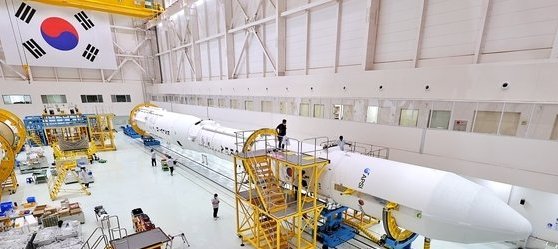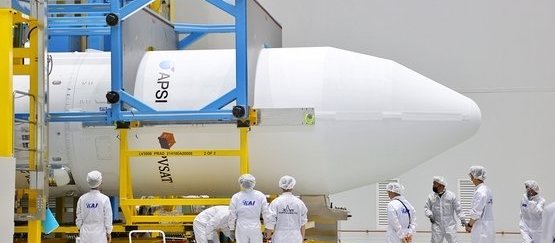
The Nuri or KSLV-II (Korean Space Launch Vehicle-II) is a rocket that is scheduled to be developed by the Korea Aerospace Research Institute in 2022 under the KSLV plan and is the first low-orbital practical satellite launch rocket in Korea. The Nuri development project is a project that will invest 2 trillion won, four times the budget of 500 billion won spent on Naro, and the technologies used in the Nuri will be the technical foundation for KSLV-III to be developed in the future. The name “Nuri” was a public offering by Baek Seung-yeop, a student of the Department of Energy and Mechanical Engineering at Gyeongsang National University, and was selected from 10,287 candidates through a public name contestNuri consists of a total of three levels of liquid rockets. Four 75-ton engines of thrust 735 kN are clustered in the first stage, with a total of 300 tons of thrust and one 75-ton engine in the second stage. The third stage uses a seven-ton engine.The design has many similarities to ESA’s space launch vehicle Ariane series, including the placement of engines with high thrust in the first and second stages and low thrust in the third stages. In particular, there was a plan to license and produce HM7B, the top engine of the Ariane series, so there is speculation that it was influenced by the design idea to some extent. The difference is the type of fuel used and the presence or absence of a solid booster.

While all engines of the Nuri were kerosene, the Arians 1–4 used nitrous oxide and UDMH, and liquid hydrogen and liquid oxygen were used in the 6-ton engine.It is the world’s seventh independent development rocket based on the weight of the payload exceeding 1 ton.This is directly related to the ability to launch payloads that can be used for practical purposes in space, and in this regard, it proves that Korea’s space development technology has reached an international level. However, Nuri conducted its first launch on October 21 last year to confirm that core technology of the projectile was secured in Korea, but the combustion of the three-stage engine was terminated early, so the satellite mimic could not settle in its target orbit. Since then, the Ministry of Science and ICT has formed and operated a launch investigation committee to investigate the cause. As a result, it was found that the main cause was the loosening of the helium tank fixing support of the three-stage oxidant tank during the Nuri flight.The main improvement to be applied to the Nuri, which will be launched this time, is to change and reinforce the structure of the lower support of the helium tank and the manhole cover of the three-stage oxidant tank. The design is changed to strengthen the fixing of the lower support of the helium tank, and the manhole cover reinforces the thickness so that the Nuri can fly stably even in an environment that changes during flight.
The scheduled date for the second launch of the Nuri is June 15 and the preliminary date for the launch is June 16-23, and the launch date will be finalized by the launch management committee in consideration of weather conditions.
EJ SONG
ASIA JOURNAL



